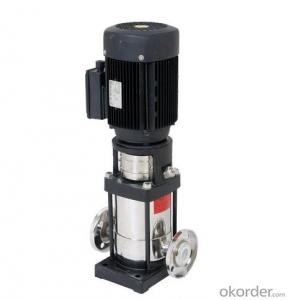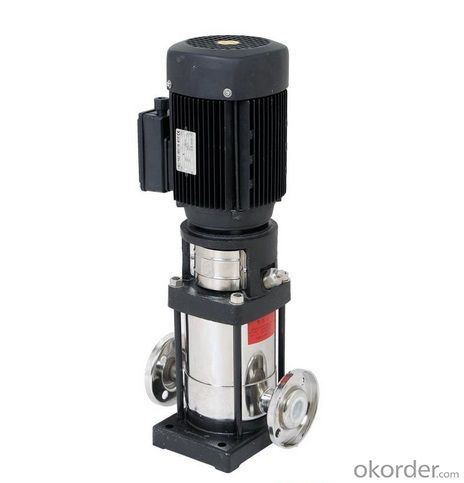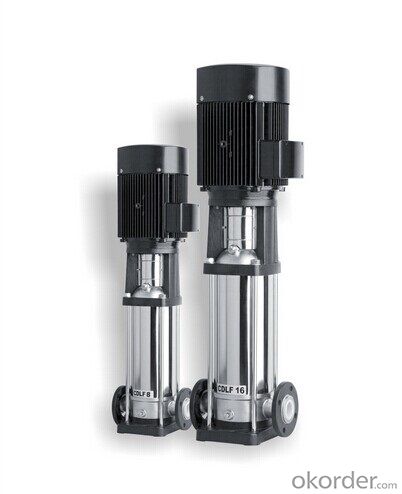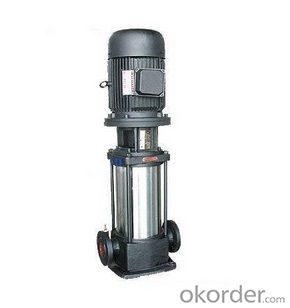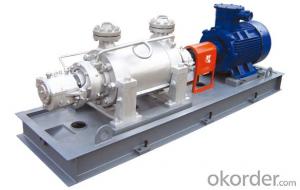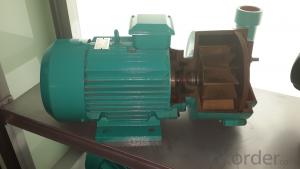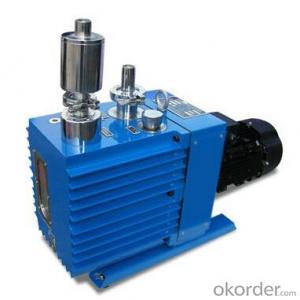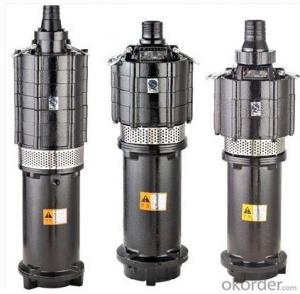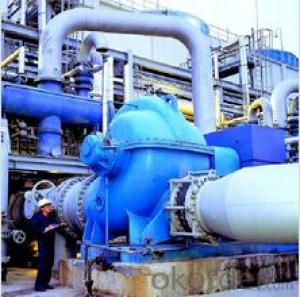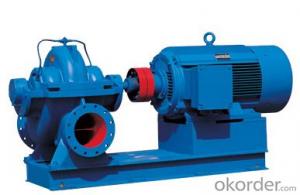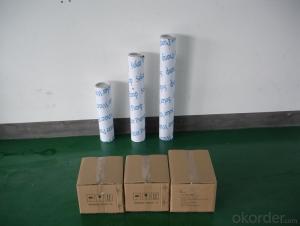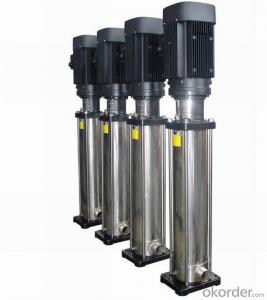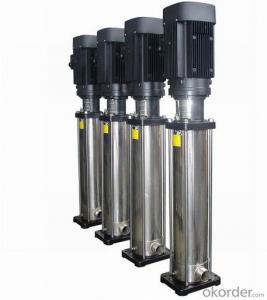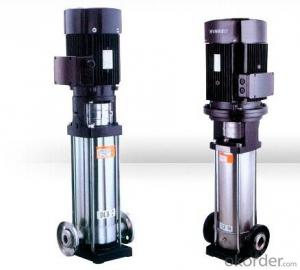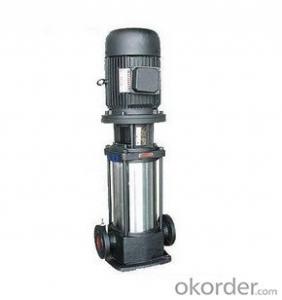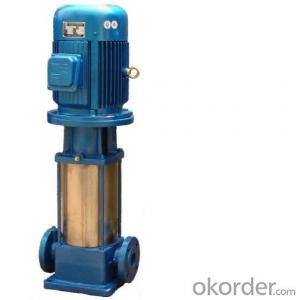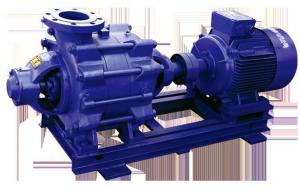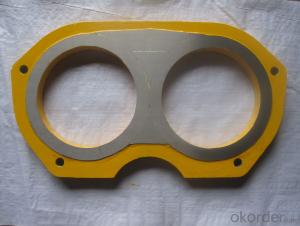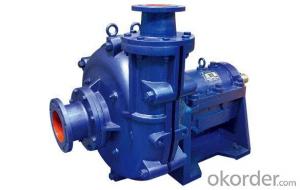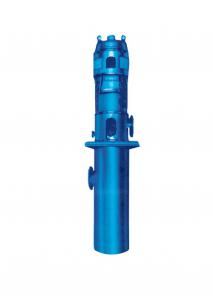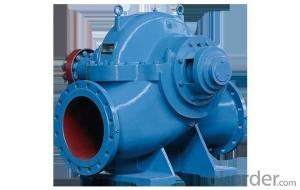High pressure water pump, multistage vertical turbine pumps
- Loading Port:
- Shanghai
- Payment Terms:
- TT OR LC
- Min Order Qty:
- 1 unit
- Supply Capability:
- 1000 unit/month
OKorder Service Pledge
OKorder Financial Service
You Might Also Like
High pressure water pump, multistage vertical turbine pump
Features
* Straight shaft structure, 2-pole motor,single phase with thermal protector
* Inlet and outlet section are cast iron,
* Impeller and hydraulic stack are PPO, It's economic and high cost-effective multistage pump
RANGE OF PERFORMANCE
8Flow rate up to 108 l/min (6.5 m3/h)
8Head up to 105m
LIMITS OF USE
8Non-flammable or non-explosive clean liquid without solid grain or fibre.
8Liquid temperature up to 5 °C - +60°C
8Environment temperature up to ≤ 50°C
8Max. working pressure: 1.0 Mpa
INSTALLATION
8These pumps are suitable for handling clean water without abrasive particles and liquids that are chemically
non-aggressive to the pump components. Reliable, economical and simple to use, they are suitable for
domestic use and in particular for distributing water in combination with small pressure sets, for irrigating gardens.
The pumps must be installed in a covered area, protected against the inclement weather.
MOTOR
8Two –pole induction motor (n=2850rpm)
8Insulation Class F
8Protection grade IP55
MATERIALS
8Pump body: Cast iron with stainless steel.
8Pump support: Cast iron
8Motor housing: Aluminum
8Impeller: PPO
8Shaft with rotor: AISI420 stainless steel
8Mechanical seal: NBR/ Ceramic/ Carbon
8Bearing: NSK, C&U, or local quality.
- Q: What is the pump lift voltage? And how to suppress the pumping voltage rise?
- [suppression of pumping voltage] the general use of the installation of absorption resistance to absorb the pump voltage rise. The simplest way to control the pump voltage is to connect the DC bus with an energy consumption resistor before releasing the pump voltage.
- Q: What is double hydraulic pump?
- [double hydraulic pump] the same drive shaft drives the rotation of two pumps, which are connected together and driven by an electric motor. The suction port of the pump is common, and the oil pressure port is separated from each other. Pump output of two shares of flow can be used alone, can also be used in parallel. This pump, a pump can play the function of two pumps. For example, there are two pumps on the loader, a pump acting as the work, a pump acting as the steering, and the double linked pump can replace the functions of the two pumps. It works by coupling the two pumps at the same time.
- Q: Operating procedures for measuring pumps
- First, preparation and inspection before starting1. Check to make sure that the drain line is equipped with a safety valve with the correct set pressure.2. Check the screws for the liquid end parts.
- Q: Rules for operation of centrifugal pumps
- 3, start the pump, wait until the speed reaches the normal speed, slowly open the outlet valve, observe the ammeter at the same time, and control the current in the rated current range of the motor.4, the operation requires smooth operation of water pumps, no abnormal noise, no pressure fluctuations. The abnormal situation should be stopped in time.
- Q: What is the liquid pump? What are their categories? What are their strengths and weaknesses?
- The air driven liquid pump adopts compressed air driving method, and has the following advantages:The pressure can be adjusted by manual pressure control valve or air control valveIt is driven by air and is especially suitable for explosion protection applicationsAble to achieve pre-set final pressureAutomatic pressure relief by pumpLong term conservation without consuming energyWhen holding pressure, medium will not overheatThe utility model has the advantages of convenient installation and low maintenance cost, and only needs to connect the gas source, the inlet pipeline and the pressure pipelineReliable operation, low maintenance cost and little noise at the time of operation
- Q: Household automatic booster pump, how much pressure to work automatically, the water pressure and how many kilograms?
- Household automatic booster pump is not started by pressure, it is induced water pump, that is boiled water faucet
- Q: Direct connection pump What is straight pump and non direct pump? What's the difference in structure?
- What is straight pump and non direct pump? Direct coupled pump shaft and the motor shaft is directly coupled with the coupling and non direct coupled pump: pump shaft and motor shaft through the belt pulley, V-belt connection or other forms of transmission. What is the difference in the structure: the direct coupled pump has the advantages of compact structure, simple installation, but the relatively small power; non direct coupled pump: pump and motor is independent, the two transfer torque through the belt, the structure is relatively large, complex installation, general power is relatively large.
- Q: Why is the flow of the pump too small will occur cavitation phenomenon?
- Throttling regulation is to change the opening of the valve to change the flow of the pump, that is to say, to change the characteristic curve of the pipeline. The commonly used to regulate the flow of exports, because the entrance throttle makes reduce the inlet pressure caused by cavitation danger.
- Q: Centrifugal pump flow, why can be adjusted through the outlet valve? Can the flow of the reciprocating pump be adjusted in the same way?. Why
- Reciprocating pump is a positive displacement pump, the volume change of flow is the unit of time, constant flow speed constant, can not rely on increased resistance to change the flow resistance increase is only leaked, only small changes in flow.
- Q: What is an industrial water pump?
- Industrial water pump, water pump for industrial production.A pump is a machine that transports liquids or pumps liquids. It will be the prime mover of the mechanical energy or other external energy transfer to the liquid, the liquid energy increase, mainly used to transport liquids including water, oil, alkali liquid, emulsion, suspension emulsion and liquid metal, but also transport liquid, gas mixtures and liquids containing suspended solids. Pump performance of technical parameters are flow, suction, lift, shaft power, water power, efficiency, etc.; according to the different principles of work can be divided into volume pumps, vane pumps and other types. Displacement pump is to use its studio volume changes to transfer energy; vane pump is to use the rotating blade and water interaction to transfer energy, there are centrifugal pumps, axial flow pumps and mixed flow pumps and other types.
Send your message to us
High pressure water pump, multistage vertical turbine pumps
- Loading Port:
- Shanghai
- Payment Terms:
- TT OR LC
- Min Order Qty:
- 1 unit
- Supply Capability:
- 1000 unit/month
OKorder Service Pledge
OKorder Financial Service
Similar products
Hot products
Hot Searches
